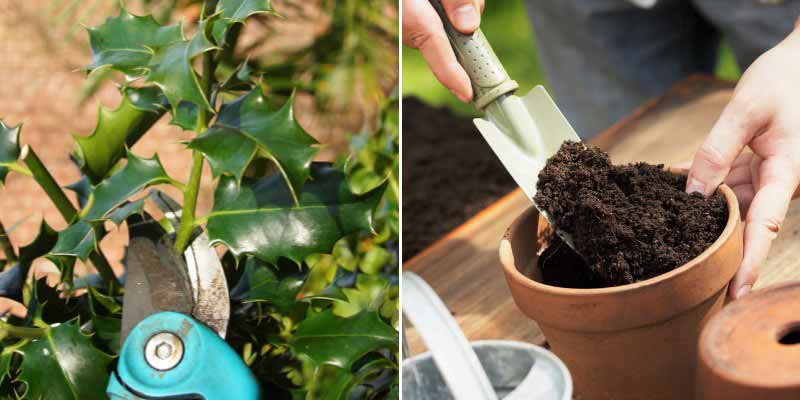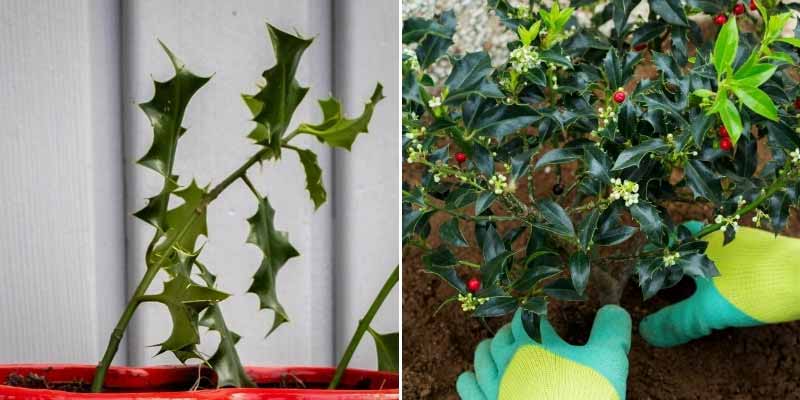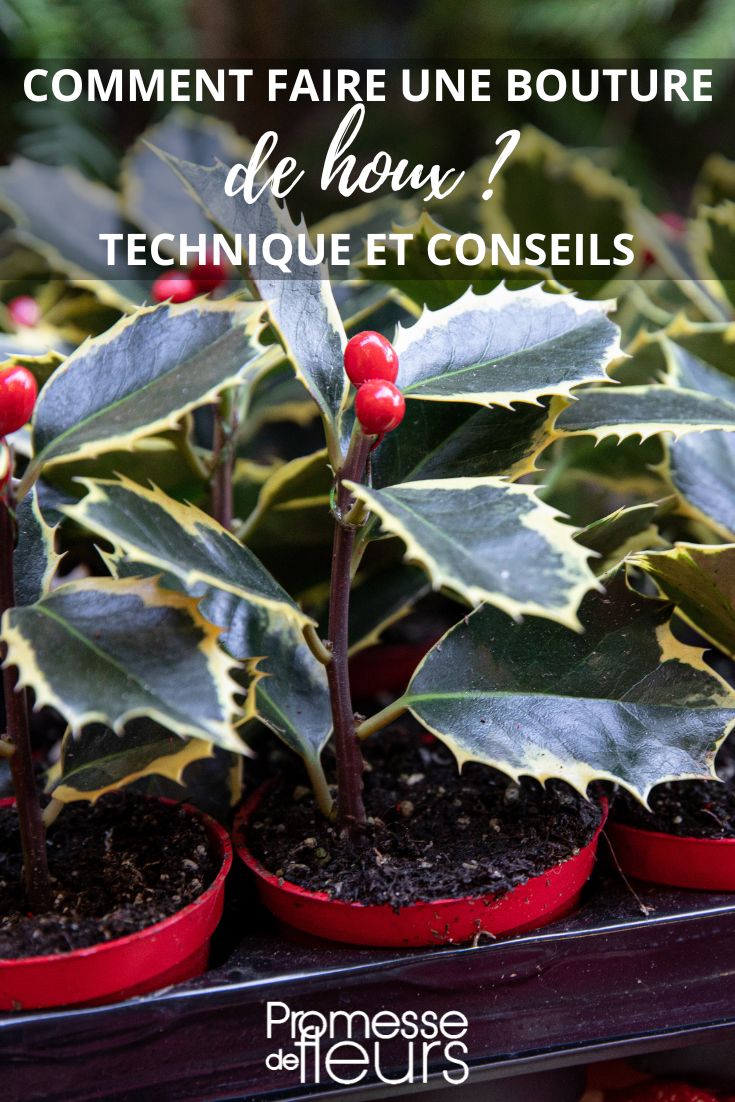Hollies are bushes with leathery, often spiny leaves, dark glossy green or variegated. Their bright red berries are also highly decorative and can persist on the plant throughout winter. Holly is ideal for creating a dense, evergreen hedge, opaque in every season. Best known is common holly (Ilex aquifolium), but many other species exist. Holly can be multiplied by layering of low branches, but also by propagation by cuttings. In fact, propagation by cuttings is the best technique to multiply Ilex crenata. This allows obtaining several young plants fairly easily.
For full details on its cultivation, consult our complete guide: "Holly: planting, pruning and care"
When to take holly cuttings?
Best time to propagate holly by cuttings is late summer, in August and September. At this stage, stems are semi-lignified, meaning they have begun to harden (lignify) but still retain some flexibility.
How to take holly cuttings?

- Choose healthy stems from current year's growth, free of disease or insects. These stems should be 15–20 cm long. Make a clean cut just below a node (where a leaf joins the stem). Cuttings produce young plants genetically identical to mother plant; hollies have male and female plants (female plants produce red berries): ideally, take cuttings from both a male and a female plant.
- You can optionally take heel cuttings by taking a small segment of the branch from which the stem is inserted. This preserves meristems present in that area, which promotes root development and increases chances of success.
- Remove leaves from lower half of the stem, leaving only a few leaves at the top. This helps reduce evaporation while encouraging root growth.
- Prepare pots by filling them with a light potting compost, special for sowing and propagation by cuttings.
- Water the substrate so it is well moist.
- Dip base of cutting in plant hormone (facultative)
- Using a pencil or small stick, make a hole in the compost then gently insert the cutting. Ensure nodes from which you removed leaves are well buried.
- Firm compost lightly around the cutting to ensure good contact between stem and compost.
- You can cover the pot with a plastic bag or a plastic bottle to maintain high humidity (propagation under cover).
- Place pots under cover in a bright spot but out of direct sunlight.
- Keep compost moist but not waterlogged. You should see new leaves after a few weeks, a sign the cutting has rooted.
- Keep cuttings under cover during winter.
- In spring, pot cuttings individually into larger pots.
- Wait until following year to plant out into ground in the garden.

Material needed
- A clean, sharp pruning shear, disinfected with alcohol to avoid transmission of disease
- Pots with drainage holes
- Potting compost for cuttings or a mix of compost and sand
- A plastic bag or bottle
- A pencil or small stick to make holes in the compost
- Plant hormone for cuttings (facultative)
- A watering can
































Comments